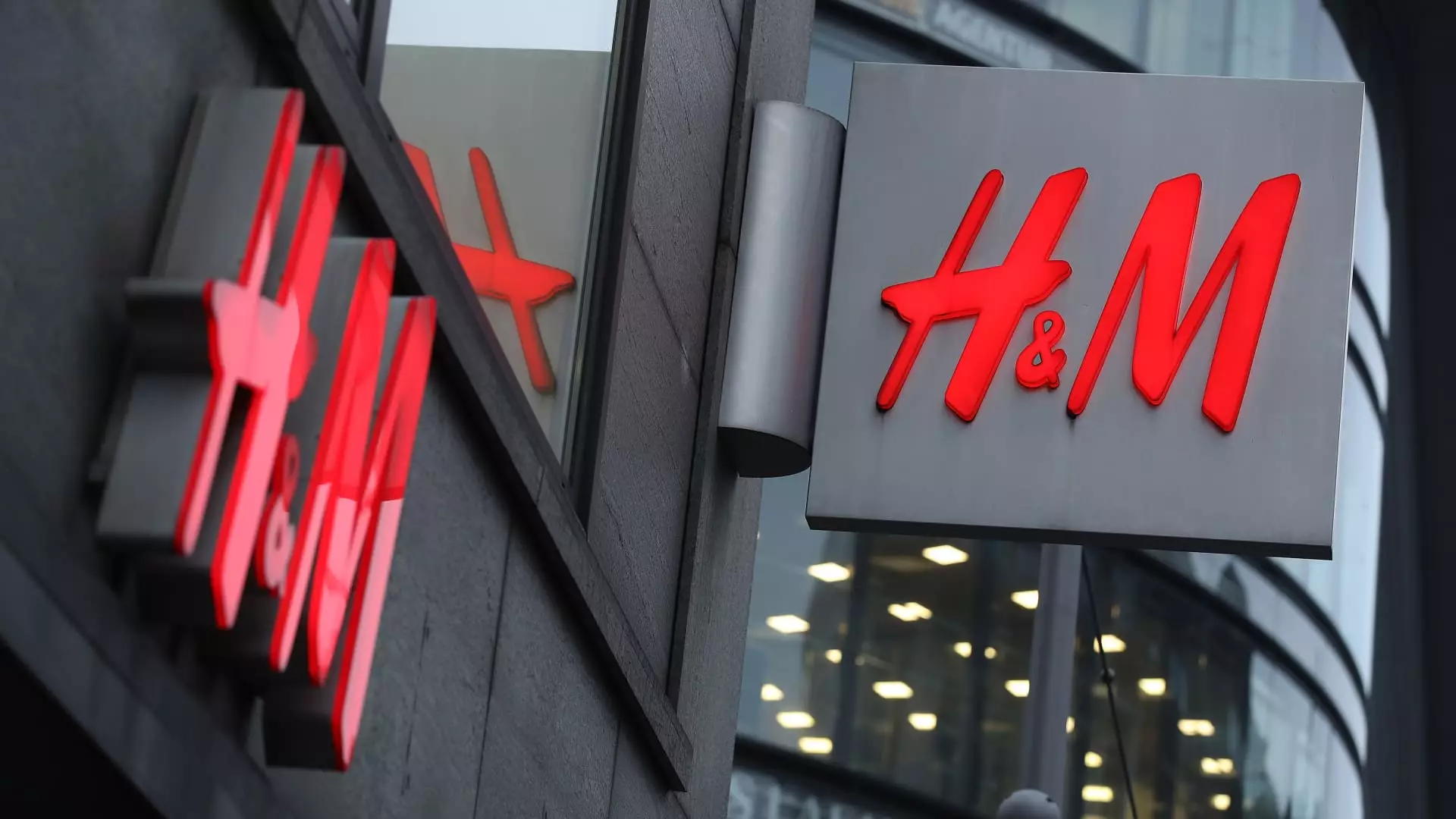In a startling turn of events, shares of H&M, one of the largest fashion retailers globally, plummeted by as much as 8% following a disheartening financial report. The Swedish company has faced significant challenges in the third quarter of its fiscal year, reporting an operating profit of only 3.51 billion Swedish crowns (approximately $345.8 million). This figure starkly contrasts with the 4.74 billion crowns earned during the same period last year. Analysts were optimistic, anticipating an operating profit of around 4.93 billion crowns. The stark difference indicates a troubling trend in the company’s profitability, prompting a critical reassessment of its strategic direction.
H&M’s recent decision to abandon its earnings margin target for 2024 raises eyebrows and signals an admission of the tough landscape ahead. This shift is not just a minor adjustment but rather a significant alteration in the company’s outlook, demonstrating a recognition of “more challenging conditions.” CEO Daniel Ervér, who took the helm just months ago, now faces mounting pressure to turn the ship around. His aspirations to deliver “unbeatable value” seem overshadowed by a reality that includes declining sales and increased competition. His predecessor, Helena Helmersson, left behind a complex legacy, and Ervér now grapples with the specter of those challenges magnified.
H&M’s struggles are not entirely isolated but part of a broader context marked by economic fluctuations. The fashion retailer is navigating a market with cooler weather trends impacting sales, rising living costs diminishing consumer spending power, and a post-pandemic landscape that has seen shopping habits evolve. These factors complicate the retail environment, where both high street and luxury brands see challenges to their revenues. In a candid statement, Ervér acknowledged the “external factors” that have adversely impacted both sales and purchasing costs, leading to a projected operating margin of less than 10% for the year.
Amidst these difficulties, H&M must also contend with aggressive competition from established players like Inditex, the parent company of Zara, and the swiftly rising fast-fashion behemoth, Shein. The competitive landscape adds another layer of complexity to H&M’s efforts to reclaim its status in the retail space. Such competition could further hinder H&M’s ability to capture market share and drive profitability, raising concerns among investors about its long-term viability.
Despite the grim news, H&M remains optimistic about its future, with Ervér asserting confidence that the company’s strategic plan would eventually lead to improved sales and profitability. However, the reality on the ground remains cautious as investors react negatively to the news; shares fell approximately 4% shortly after the report. The company recognizes that the cost of markdowns will likely rise in the fourth quarter, further complicating their financial picture. As H&M navigates these turbulent waters, the focus will need to shift toward sustaining its market position, managing costs effectively, and re-engaging consumers in a rapidly changing retail landscape. The coming months will prove critical as H&M attempts to balance these myriad challenges with its ambitious growth objectives.

